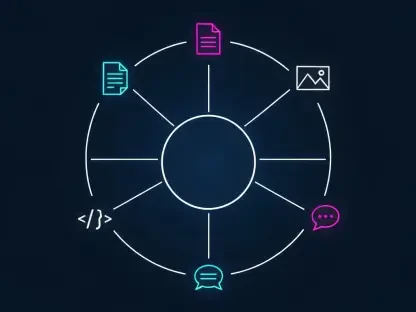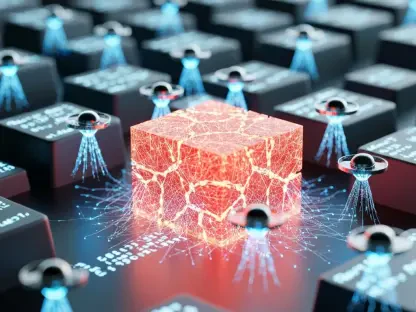In a groundbreaking milestone, a team of Japanese researchers from Osaka Metropolitan University has developed an advanced deep learning model to probe the enigmatic Milky Way galaxy. Led by Graduate School of Science student Shimpei Nishimoto and Professor Toshikazu Onishi, the team harnessed the power of artificial intelligence to analyze extensive infrared data from both the Spitzer Space Telescope and the James Webb Space Telescope. This remarkable model efficiently identified and categorized bubble-like structures within the galaxy, unveiling critical insights into star formation and galactic evolution.
Innovative Deep Learning Model
Identifying Bubble-Like Structures
The researchers’ innovative model focused on detecting and categorizing Spitzer bubbles, which are primarily formed during the birth and activity of high-mass stars. These bubble-like structures are crucial in understanding the intricate processes underlying star formation and the broader mechanisms governing galaxy evolution. Spitzer bubbles, characterized by their unique morphology, offer a window into the turbulent environments where stars either emerge or end their life cycles. By leveraging AI, the team accurately pinpointed and classified these structures with unprecedented efficiency, overcoming the manual limitations that typically hamper such extensive data analysis.
The successful identification of these bubbles, facilitated by sophisticated machine learning algorithms, marks a significant advancement in the study of stellar dynamics. The application of deep learning in this context provided a holistic understanding of bubble-like entities that previously required brute-force data crunching and manual validation. With AI, researchers could not only accelerate the analysis process but also eliminate the potential for human error, thereby ensuring the reliability of the findings. This synergy between automation and accuracy is transformative for the field, enabling astronomers to delve deeper into cosmic mysteries with enhanced precision.
Insights into Star Formation and Galactic Evolution
The discovery of numerous Spitzer bubbles offers profound insights into the dynamic processes that dictate star formation and the evolutionary trajectory of galaxies. These bubbles, formed from high-mass star births, serve as laboratories to study the lifecycle of stars, from formation to explosive endings. By understanding the conditions that lead to the presence of these structures, astronomers can gain valuable information about the environments necessary for star formation, offering clues about the origins and futures of many galaxies.
Additionally, the study marked a significant milestone in identifying shell-like formations believed to be remnants of ancient supernova explosions. Supernovae, among the most energetic events in the universe, leave behind shell structures that provide critical data points for examining both the aftermath of stellar explosions and the medium in which they occur. With AI, researchers could investigate these shell formations more thoroughly, allowing for deeper insights into the violent processes that shape the universe. The implications of these discoveries are far-reaching, suggesting that AI-driven methods can significantly enhance our understanding of the cosmos and the diverse phenomena that govern its evolution.
Power of AI in Astronomical Research
Data Handling and Analysis
One of the key themes emerging from this research is the unparalleled ability of AI to handle and analyze vast datasets with remarkable efficiency. Traditional techniques for astronomical data analysis often involve cumbersome manual processes that can be both time-consuming and prone to human error. By contrast, AI-driven models can rapidly process immense volumes of data from telescopes, discerning patterns and anomalies that might remain undetected by human researchers. The combination of vast data inflows and sophisticated computing models has amplified the scope of astronomical research, enabling scientists to tackle complex questions with enhanced analytical firepower.
The role of AI in optimizing data handling processes extends beyond mere speed; it also enhances the quality and depth of the insights derived. Machine learning algorithms can uncover subtle correlations and trends in data, yielding a nuanced understanding of celestial phenomena. This capacity to sift through and make sense of enormous amounts of information transforms the way researchers approach astronomical studies, allowing them to generate robust and verifiable conclusions with a higher degree of confidence. The study from Osaka Metropolitan University exemplifies this transformation, showcasing how AI can be a true game-changer in the realm of celestial exploration.
Transformative Tools for Future Discoveries
The success of this AI-driven study highlights a broader consensus within the research community that artificial intelligence and machine learning are poised to be transformative tools for future astronomical discoveries. By automating labor-intensive aspects of data analysis, AI enables researchers to focus on interpreting and understanding the underlying science. This methodological shift is pivotal, particularly given the continuous growth in the volume of data collected by increasingly advanced telescopes and space missions. As these tools become more integrated into research practices, the potential for breakthroughs in our understanding of the universe expands significantly.
The implications of AI in astronomy are profound, stretching far beyond the immediate study of the Milky Way. The interdisciplinary collaboration across various Japanese institutions underscores the collective effort to push the boundaries of our cosmic knowledge. By adopting AI technologies, these institutions have set a precedent for future research initiatives aimed at unraveling the universe’s many hidden secrets. This study, therefore, not only represents a technological advancement but also opens new horizons for detailed exploration and understanding of the cosmos, marking a critical step forward in the enigmatic field of astronomy.
The Profound Implications of AI
Unveiling Nuances of Star Formation
One of the most profound implications of this groundbreaking research is the potential of AI to unveil the finer details of star formation and the dynamic processes that govern galaxy evolution. The advanced model used by the researchers allowed for a nuanced understanding of the physical, chemical, and environmental conditions that facilitate star birth and development. By meticulously analyzing the identified structures, scientists could derive accurate models of star formation processes, providing a clearer picture of how stars—and by extension, galaxies—evolve over time. Such high-resolution insights could pave the way for more precise predictive models and simulations, enhancing our ability to discern the lifecycle of celestial bodies.
Moreover, the utilization of AI in this research underscores the importance of integrating cutting-edge technology with astronomy. This synthesis of AI and traditional astronomical methods pushes the frontiers of what is possible, enabling a more precise and holistic understanding of the universe’s foundational mechanisms. By continuously refining and advancing AI technologies, the potential to unlock the secrets of cosmic phenomena becomes even more attainable. This ongoing synergy not only enriches the scientific community’s knowledge base but also inspires future generations of scientists to explore and innovate, driving the field forward.
Paving New Horizons
In a groundbreaking achievement, researchers from Osaka Metropolitan University in Japan have created a highly advanced deep learning model to explore the mysteries of the Milky Way galaxy. This team, led by Graduate School of Science student Shimpei Nishimoto and Professor Toshikazu Onishi, utilized artificial intelligence to meticulously analyze vast amounts of infrared data taken from both the Spitzer Space Telescope and the James Webb Space Telescope. Their innovative model successfully pinpointed and classified bubble-like structures within the Milky Way, offering significant revelations about star formation and the evolution of the galaxy. This pioneering work not only enhances our understanding of galactic processes but also demonstrates the powerful application of AI in astronomical research. By harnessing AI technology, the team has paved the way for more detailed and efficient studies of cosmic phenomena, potentially unlocking further secrets of our galaxy and beyond.









